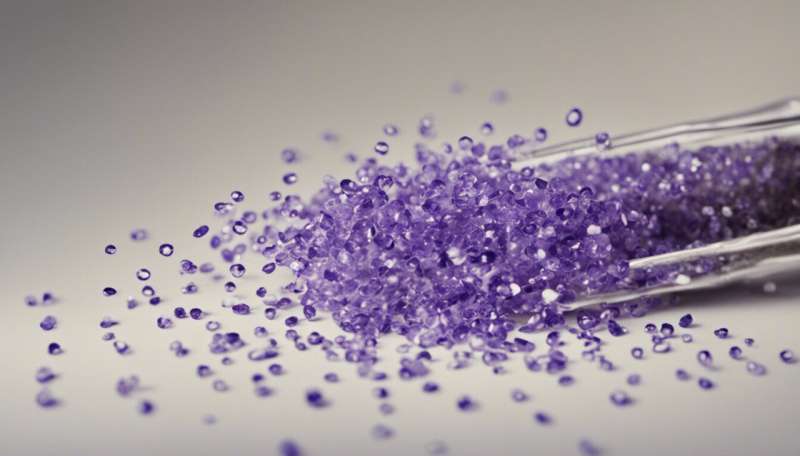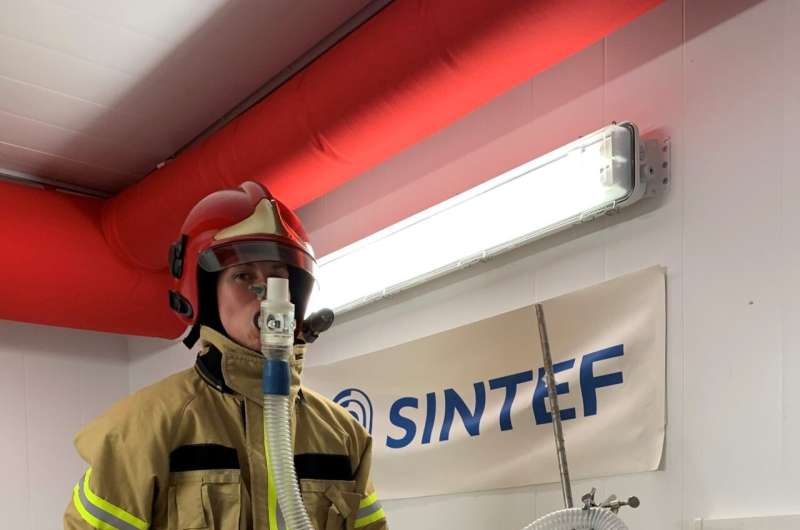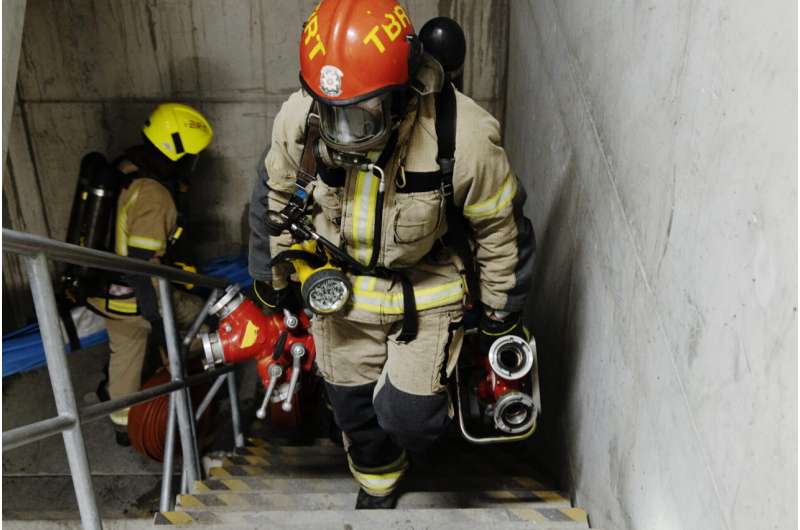Do men and women respond differently to heat stress?

According to science, women feel the cold more than men. But how do women respond to heat stress compared with men? The answer to this question may help us to make better protective clothing for firefighters of both sexes.
More and more women are being recruited into the fire services. However, we have too little research-based data on how either men or women tolerate heat stress while wearing their cumbersome protective clothing.
"Very little research has been carried out into heat stress tolerance among women. This is why we've been looking into whether the sexes respond differently to heat stress," says Julie Renberg at SINTEF.
Renberg's research is part of a project called HERO—from the Norwegian Helserisiko og helseeffekter ved brannslokking (Health risks and impacts among firefighters) The project is designed to investigate a number of different types of health risk that firefighters may be exposed to such as physiological stress and carcinogenic compounds contained in fire smoke. Its aim is to identify measures that can be taken to prevent any damage to health to which this group of workers may be vulnerable.
Half of them threw in the towel
Renberg is an occupational physiologist and has been coordinating the experimental work linked to the project at SINTEF's Occupational Physiology Laboratory where 24 men and women between the ages of 20 and 40 made themselves available as voluntary research subjects. All the subjects had previously passed the physical tolerance test for smoke divers mandated by the Norwegian Labor Inspection Authority. In the lab, they were exposed to levels of heat stress that most of us would much rather avoid. They were fitted with sensors to measure their heart rate, skin and core temperature, and were set to work on a treadmill in 40 degrees of heat wearing close-fitting and cumbersome protective clothing.

Levels of work stress and sweat rates were also measured.
"More than half the subjects had to throw in the towel in less than an hour," says Renberg. "It was simply too hot and no longer safe to allow them to carry on. Their bodies couldn't dissipate sufficient heat and they lost a lot of fluids due to sweating," she says.
Heatstroke is a risk factor
High air temperatures, combined with heavy work and cumbersome clothing, increase a person's body temperature and thus also the likelihood of heat stress and, ultimately, heatstroke. Heat stress can reduce his or her ability to think clearly and to take rational decisions. This can have fatal consequences in a life-threatening situation such as a fire.
Sweating is a physiological response that helps us to reduce our body temperature, but it is in fact of little use being a "good sweater" if you are wearing too many clothes. There are also major individual differences, regardless of gender, in how much we sweat.
"Clothes prevent perspiration from evaporating, which is essential if sweat is to help us cool down," says Renberg. "So, if a person sweats a lot, it's an advantage not to be wearing too many clothes. When we wear thick or closely-fitting protective clothing, the sweat more or less only contributes to fluid loss and may lead to dehydration. In our experiments, we found that the subject that perspired the most lost as much as two liters of fluid, while the one that sweated the least lost only 0.5 liters. That's quite a big difference," she says.

Women coped very well
In spite of previous studies that have demonstrated that women may encounter greater problems with heat stress while working hard and wearing little or light clothing, in fact they coped very well during the HERO experiments.
"We were very eager to see the results because no-one had carried out tests of exactly this kind on women before," says Renberg. "What they showed was that gender had no significant effect. Both sexes coped equally well (or poorly, as the case may be). But we did observe some major individual differences," she says.
Heat stress tolerance tests such as these can be used to find out how well our bodies respond to working in high temperatures. This knowledge can be useful in enabling us to make workplace adaptations that can help firefighters, regardless of their gender, to tolerate the heat stresses they encounter in their work.
"Adaptations to improve heat stress tolerance may include modifications to work procedures, such as cooling before, between and after smoke diving, hydration procedures and job rotation," adds Renberg.
More information: Julie Renberg et al, Heat tolerance during uncompensable heat stress in men and women wearing firefighter personal protective equipment, Applied Ergonomics (2022). DOI: 10.1016/j.apergo.2022.103702


















